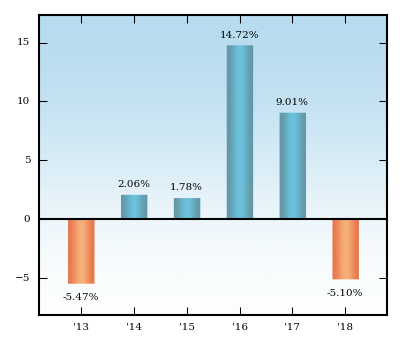AT>6">(QSS1IOZ0!9"^EXTG1W^['*=$?70.IQBSLKF GL.7KK+HISUMB3
M +RD8^+M>AJXQ1R0*?/A8_.C7;NXI]ZK?WX%J%Y &O[%WR?DT^X>'!X>,MKGU;?VM_?V>6R>E_$[(97\ED7
ML[G?95!.'Q3PL[M]X(6ER:!@9Y$LHO:U#RH^^+1A0<5N^D$,2E8$]Q.J@A!$
MV)8B6J"-[_]1.^=SD?4E] *[R2(R ._PC#G!S_Y-@+ OJA?J!&%S$RJ"90EK
M@;O(U,7]X-V_ZP1U'60DT=L+$O2@0%3?DK[)M'<:L$*H!7(F0%:<*>A3B;B>
M:=1-\L?M6;ZDGHM@05Y"23\/:*ISVEVD:9&D!08AG78L49U0\]L@>43CA_/O
MTR?R4S5NM1,*
M&X#[2U0\-=D]919O2%L3@Z:5J/05 TC2VK!"@P:6H*%A-88-,5%+ XH,H%9!
M"P/ 3^.4U*M1AMV7UW-WE6;%0QI'Z1W>.Z>G#:0*A:3)Z<-I-PZLJ6T *1I
MRH^3L.5"6I$A=T"JM-'MQJXR7"7B6OM;VKEZ>Y*^5:4;1;):PSPYK2!5
M3)1(5BM8N:GB2^J>\6(;!<8P56\?:)VX;8R 'X!9-]3Z*K'*YS8 M5HK(WVM
M8BU4VA@!+[<>\A9Z]@;E\W-]RW^7MIP%!!L$60.HN;+8U\7&?9Q5RDW(>O2O2BGX&$SLO#RG*I@!24+[M*I'E:P-/M^
MG:H FZB'7+)3C6"S][![=JH3;#97OF^GZL!F=_5K=[K'LX+-P%%#YN'V8X&]%P2-N>J>!U036"SKL0/@2H!FW1[?@H4-FRN%3DO
M4 U@I,TU]PR$TS,)E.7)&4]YM(@NZ45TE1S=7EY@Z8N;.A=1QT
MSZGW*26@7"/%S2] 2\#U3*VM?7GWFO36;L\$<<*X/+:&2.B-N615,T)#R;P^
MF3ZAL(Q1Q^^YFB@^:_;X>$+01N3'IMV(-%SSK*G&CS) I4BWN@PXU)%O?(AM
MWFF9J\YMP;P R@BN:#;0HME6CF-W3.MJ66_,8 =JM%V):6?&00TA:VX,/@BH
MJ_SL*C\;U<)5?G9+H75="KF"S& +,D,=R9MYF:L$RM5)-N%#O#%UDJ%:!*#<
MYLH76U:^V/+QO?;>&*_G0%=5&")^:ZL*6VXH0!%AIP_YE5"Y@A\YSEEE?R6(
M(=?^Y4!W,^5#AZ0>F*=I7,Z2ZV#&F-H"44WIT;]'LW)V6L[*N(J1KH[Z2/3Z
M(QJ_H&S\\(#';?)XDT53!OR!S6&H5#RQ3M<5F^E4H87@WORBKY-06#]<"4!-D%I9?V7])Q#5#54(
M3N^D.YY.TS(I%IURG.>H8)P1"(7-P%4 :63!Q;%(3"%SV2W4-BN"]:'QXW5E
M)0:N$B$4\7@GQ>I!!J&JQR"%AJX8(13]&*2@VLH10EF0=U%K91@:S9WVVF$X
M=/$(H:B(FJ["126$NB*O4 -&11$UX()%*8@R(H.U %(]9-!,9R]K050.>:4>
M0$J'O&:5N6I"/57_)VC.$*)Z05F0Y-6ZICK:WF6==^^NGG?73QN1QXV6SQO1
M!XY^;Q[YQYI?&AD/1 7E3[$6L<[63Q7C8](%1[O@Z'682$ YQT53 X^F7N^!
M[\*O7?BUFQV6T8*+UW9$H7TJN !O%^#M KQ=@+=-RJQ9@/>:,PS8X6
M5^#'F LA-WU [$+('7MN('NZF'-+8\XW94*X('47I YG=[X)0>J;8EE 46VO
MJ_E!Q )1W9'M4M208]NYX-T4@S>6/RQX+ D>J]%%W%#%@6X\22U VR>CY& 4
M92_1%'G^O2<#KMY2CZ$C7KST:XMPI0]!Z+HO=6*7KQ@-'B"9NT
M[#7N PWJS&DM_/*MF [&QYWSO7>^][9,%J#"=K*@\UNWU&]]G0:]\TUWONEP=LN;X)N^3M8#%&6N=BS?89P51- &D*1BEP,T
MF[!=R6*RQZ7QHX$WP-^%X0'^6OC[,'R_7PF?C/BU-CS[F .Q=PFR8,4 YQ;N!6N8';
M.L"=*[AS!7>S *B9=^[@SO#;,;:<2[AS"7OBR;F%6^86
M#GB(.]=PYQKN7,,=&]K+ALX]?"W>
MU0("<*F//:L%!.!2WWM6"P# Y3[YK!907*P5*&G(U#5^@O.^"G8"$P!Y]K]=
MK5V('O]O5VN_?SZ_!FJU AQ4CU2@'376U6/NTB*(;U%19DE^@FT'%BZJM=H!
M:P%WP"Q 4SUCM'C(Z'_H8_YWS3=,QKW,09T^KD6$@SUSPOC@$NR,$%.;AI -70NR@'9_HM&5PNS,&%.;@P!XB1 2[,P2V?
MUG;YY.(U,""CRI)U0O9/O!LX1TQW1($0+.8B!"=S-'0.#]*-.G*MNJOOG-*AC.OJG
MRRPA_? $D1(\.>T@+_%,JCKH+"@D.#NBVJ%Z1T<,+_R^A E@C$B2OH0)8+X4
M6.]$7P\P1@A+7\($L#TIL)[/N1Y@C-B9OH0)8 =28 =F@!U*@1V: ?9%"NR+
M&6!'4F!'!H#Y>+TD!E9+F FL?RUA E@$LM?2Y@ )K'\M80)8!++7TN8 ":Q
M_+6$"6 2RU]+F FL?RUA E@$LM?2Y@ )K'\M80!8*S(V[Z$"6!2R^^9L?R>
MU/)[9BR_)[7\GAG+[TDMOV?&\GM2R^^9L?R>U/)[9BR_)[7\GAG+[TDMOV?&
M\GM2R^^9L?R^U/+[9BR_+[7\OAG+[TLMOV_&\OM2R^^;L?R^U/+[9BR_+[7\
M?L_RZTQ]H')#Q#R&-^X5]1KP_>0G1K.$#,7?.;F'D!%DJ KUT3Z$I!^O0.[U
M'8@L0>ZWKW6M0MYDONFM]X CWULB[RT(@2-OTO+T5HS D1\TQ&0T;]K2]**'2KB+2^2J'0K6+2^K*%0K>*2NOK& K=
M*BZM+VPH=*O(M+[2H="M8M/ZTH=NDZQBT_I:B$*WBDWKBR,*W2HVK:^6*'3+
MV+25L[%_4@0<>BOGJ65LZC5LZEO&IE[#IKYE;.HU;.I;QJ9>PZ:^96SJ-6RZ
M:QF;>@V;[EK&IE[#IKN6L:G7L.FN96SJ-VRZ:QF;^@V;[EK&IG[#IKN6L:G?
M2G!N&9OZ#9ON6L:F?L.FNTLVM2U7P O*@D=&Y-9=%B3Y,XE_2PI01[N;0[N;7+4+;H+M]9T&
MKI#7>T9QNT)>*H6\7K\FNTJS)$H>\R+(SF\0_7P79;ZA@0U1K8G9EX:J,
M;5:5,;!*J4V6@7MCHSGMUY>U82Y>5SJ\[AQ^'G&AL.Z4]PK((2>^%\!WTPS>
M>-8']U<49,PDM7Q1HU!9>8_XHJ:@3B(\$9=I=90@=YN8@B[+^"]M8,4Z!\&9S/C%7*R'QFW,+.?EX">W:^.<'!X *:-GS"N+!B%U;LPHH=
M4SNF=@')*@')X.*CW#0"%\IL(IK8:(RU99' QD\=WAJ*_;90YH^-_'#VR#I:
M;SX5W[6>):,[0H2/$W)@2!^UFWPF)M_[C/(/!U=W9C5^[_ .,$O^$T$E"UO
MSG];.DEET&W=SD8Y,2YEAKH*G@5%L+ M^>OGWQ&9?\MWL&<@>=/H=_HND+,0
M[AFT\]^VQW_;S34H@]JY;B;!9SWEU0_7J=C/'.7@[!V\WO3:4F)Q+
M$%S?;C=WG'>0#)3S#G+>08Z_-Y>_7:P6+U8+GHNOFTLN;,N%;8$,VW)YF%U,
MV<;&E(%52F,>9K>TAKH< +JT=C[X\'SPW8QR[OC.'=^YXP-TQW>FR6*R=Y[Y
M:^.9[^:A#4[Z:K=JMTLOB>M@UC46?#'-^P-V>8'NWS7;L9]0$.*!)OJJ2Q$M
MT,;W_\"]$;T@+K*^A%Y@-UDT"[*Y(!I$(*H7Z@1ABQTJ@F4):X%[_OT9KPCY
M'[S[=YV@KH,L"TCO"'I0(*IO>_24QIC!+Q#*3P-.#1:>G!&0:5S.$H:Y%HMJ
M@7H5?(]FY>RTG)5Q]4&K0]-3C.H1C5]0-GYXP.N8Y!'/[BD#_L#F,%0JGEB7
M*(K-=*K00G YJPI?C9.;,IL^!3G*U;_.T,?H5!'O1E&6H?!5PTZM,01UA$-.
MW,C0@!LGMRA*7E!>H/ L>HE"O.D@ERHKERQRW=[P1#VK0Q2B6<4-V/R2ES>_
M8*P31<+ZX4H :EL\8$.2/"*%_A.(ZH8J!*=WTAU/IVF9%(M..V
ML!FX"B"-++@X%HDII&>/\HS(:CEY7*R>^I!6B;XHAC LI>\-+$\^\]&7#UEMH5&6>3:!;%07:=)D-5D;75%$:%
M5\,)'A->90SH,!;IH-!$+W1_.'1^$[W0=X=#YS?18QY5 9N%>3S]9QGA_<1%
MF81D8F&[H0):L9G.$RDA7F/@<.?\$D1DHX*7L-'LOLSRBEI$8%7:: %_C0J5
MSN6( >E?TR@IR,TZV4WS&9 I:P;L5920 X#+ZIBOR@:(ZD7%
M\8S@4E!!^@2=BM&!<)<%8;TPPDO16903ER[^]Y"TTCL/T'.&C<8[1[^*<"PBBQ(,[S*"K+Y$B-"R64R
MCOO)>R29ECQJR]N%6UX;?79];2XC(A@9OA&<)@(OS8.?Y%$14EQPM:
MI9$!^#*DY@;*Y#E-\C2CHST!QC#FIR8=51>=SUWPJ
M;71G0519$4K$=4-NE8BYC.,RK];Z^=^"+ KNHS@JYN.'.A):G'QRR&-TJSA.
MJM/(]H)562R\U
MZWIM.'VKB@$7R6H%N_B.BZOX:IOP-0U"QA"6M]#C,I(D91#7/,!=DS&%],,3
MK-%XQ "NS #+!#*;!#,\"^2(%],0/L2 KLR P?V='
M8OEK"1/ )):_EC !3&+Y:PD3P"26OY8P 4QB^6L)$\ DEK^6, %,8OEK"1/
M)):_EC !3&+Y:PD3P"26OY8P (SEMM.7, %,:OD],Y;?DUI^SXSE]Z26WS-C
M^3VIY??,6'Y/:OD],Y;?DUI^SXSE]Z26WS-C^3VIY??,6'Y/:OD],Y;?EUI^
MWXSE]Z66WS=C^7VIY??-6'Y?:OE],Y;?EUI^WXSE]Z66W]=E^>G)OXH;H$A6
M*UBY.R!?4BO06Q3D:3)!Y#8%A74]D8@D&R5YQ;)T=CF;H3 *"A3/;S(T1>1&
MZP9E4HK0=N'SA'3VNM=#.RK'[&T4<#J8#4!)>4E4%[\M<004!;/A4- **SW!IV)
M1#P<1&T @!\*7!/HK^DWY?$ADM7:PTP@XM$A:&(>^D#8^OUQQ-Z*8%P4J[<3
M/Q %MQ'%9D94:/F[G5;)=1A+*I4V6L!7K[Q.SU!83JMDW&E5W($FHZC*U?;A
MJ[4RTOL_DXPFM4V^(#F \,Z&G5U-L9T1)2I/J!B]!$EQE^+>I)G*Y&KP6QI1
M9)S4A0+'#[3Z\>0I_28NPRYN:$2-5G(F"J<:*XQ0H %-S0RM88[@W#9&P"_W
M__56E.WE3?=MK][OZGFKV0X<\/6-';IT@<@/7^0M])RYO6#^>$1J3J4"66-@
M12ZF8G%3D#F;'KZD*:"\]"("4:-060?&?%&34)E7^GQ14U G444<"Z=G)]Y2\<[%F_2O@"=,\;!A1H1@GQ!>Z>LPPHW/T"XPO8/5<:
MF+#[5<<7^'O[)ICX)XQ"Y L->DZ9H#3H%BI?@.XY;$($S3IZ7>#O^76"PL^K
M:KX W_/]! V^M<:CO-0[00"EP,!BYU0IV&RK6/:<*@.;A5]9\)PJ!YNJ!Q4]
MIRK!IG&E NA4%=B,_O9ZYU1/V+POK(%.58"]"NA42:>@85._H'8Z50 V_:_4
M5Z=[.BL(GUUSG:I@!;VWZUU1X+"IG%FMG4*'3=3\(NX4/VQ6%A9VIRI 9V->
MO7>*'S;+JI=]I_K IMPAM=^I1K#Y6*$2/%4$-B\KU(6G)YFPV5JA2CQ5!#9G
M2^'#9F[%.O)4&=A<+D(.F\55*LY336"3.:<6/04/F\E?58>>J@:;U&^XY>DI
M?M@4WL/?OP[8AF>[#Y6E#CGBH FZ?E)>^I'K )>UGNEQS/C!]:
M!S4L7:S@ZZ:>/-YY5$;MG@97&-NLG%U61\F$.FY1O< ZGA'%&KU@
ML_BRGEP]NNZR(*S7B'C=/HORG)R&-[K )O6F0/8SJ464%"=I\705Y 7F]&K1
M&[9.J_9@LSC5I153-7[ 6_,,3CF!6KA$5MT^ZV9=^*
M!<)*#?B>"I:L!>I:OGQWK'TKU@$KGZ)[V;-O!?VWZ\Q[#7;8/,_ OMM@A\WK
M#.S[C>NG%03>PDX\]RAV*[B9449<8(8.K.!IADYLDW1@$SOW2M0WYNG )J+N
MZ=&8J@.KV+JK1\MLV<3673W:)LPFRA:Y$0
ML#FHEVB%L[B8"O:$#FY^K$L^"80.;E8F
MP&8>PN;BJF TSU(>PN9?(O US5$51-^ ADVVC'+L58C%15Q.BW+EV/40-MTR
M-*$5Y5&.LA=TEL9QT-Q;',+F7;8Z=;Q/Y5*83VE13K
MS4AR
M +SN:+2R@++3)"2.2'GT$*%P4@15PG6*'SYI=T\QOEC U'W'^2_P.;K!"IN:
M:4;H8TS)O'S+5!/8U-R"+XI-ATW([!2>EW%XWP(.FW,[P'=;P&$3; ?X7@LX
M;(KM -]O 8?-K!W@!RW@]E I!G[8 FX/D6+@7UJ)P.RA4 S\J 7<'N;T=W9:
MS D\75D'>(LY@:K .\Q9S \X5U@+>8$WB6L [P
M%G,"SQ36 =YB3N 9PCK 6\P)/$]8!WB+.8%G!UL%WO* ](!G!^L ;S$G\-Q@
M'> MY@2>%*P#O,68D[@.;TZP%O,"3R'
M5P=XBSF!Y^SJ &\Q)_ <7:O _19S0L_.M0J\Q9S ,W%U@+>8$W@BK@[P%G,"
MS[O5 =YB3N YMSK 6\P)/*,6O0<5^*=[P)-J416X3NH>\)Q:5(&Z+O$$D9MH
M% XK0[S,O@^;?1M5*U\L6FWY.BVJ:@(HO$R:8DPMK6!3,W'.NDO)W6\MMJA-
MNT0/FY_I-^EJL7J7#3P+%T^)E@*P.;NJ)I\7?RVQ$BB+Y^R1!)N^E]Y,3%TZ
MXPDVH8M5::D!F]Z_IM_D@\H.>F>JTAE3=O \4Y-&"^"YM&2.[Q[P5%E=_,0#
MD._^YP%/F-75IN5@?5IE/6RM#8&GR*I 7Z=G*"RG!!)>')*H.IH2["[XCMK?
M!3:==[_+SR3A7,TE%R17(]XLKI@NX.FSNNI4+K,Q>@E(J5K\96A"VI9"L/F]
MJ] X0=5.9/QP_("M,E9I\I1^:UMEV$3?U:>56Y,J5 V_K*41;-[O#3F^K[D'
M//-65Y7E84N]XV>',=&]\> C ."IO+B=P?BNP#-[=57AGT !3^=U_((9Z1&)
M@@D\X"F\6"HP@@J )_!B:-'9K0'/W,50H)-"S0.>LXNG0>M,'WBV+HX&;6<;
MX'FZ&!I,HHH>%W$V+4U@4S]#$TZP$/#L7:T,%1/T@C#X^:\1BL,>3P#/X<75
M@T$6P!-Y\519#4WV@.?VXFG14@ V9S,4P+NM\W^6T4L0XW5[5QO8!'[W%&7%
MG#^[89-W!SUK3L/F[E4%NC,9-FNO8F_!ADW12]BB60L\B1=)#A575=[NTN8"
MG;$1;3)X_7F[H\97_)_U7_ZTM37Z":N23;SU>X:X/D_.HTS9Y3D@'F)$W"\[N+96]%
M!7G?#OZ?[XVV1O3A^$?R_.WZ!:/%&T:_+]_Q!Y98O&=$7C2JWS0ZOQHMWS4B
M+QN1MZV,$]S_*UV _SLHTN4W?LK00]T#.1T?.9I^?DQ?MK-LF[A6XG^WR+];
M.][6KO?Y>Q[^"SE[:+XR.7J@CZOPUH<378'M=X(5HJC&A7_H L._^COMU-99
M%OW5\?8?I[/)Y%/"3V>?XMP[JXS!Z*HR
M!OG(3:X/F%S&1_''0Z^'D0 I%?A08J.3:BM<@5//K0$]W9UL%/S N>5XS?C4
M \IK0EBX-] C*2D?,.<_4P(P:S'Q+F:2[UC*CJGR]C&I 1B3A#@RYGA(T)N,
MZ>*H9RWG$U#J:=TR7Z& I+9F3W:>'&P:XJ%>S*U=1T:63)YW':7:0/+HB2^I
M!2CUV4+Y.#DCK!/=5YGX\ZN5 \(&K[2!6=C'BZ((@^%W&QI=(HC'.->@\98+
MD+60CJ?N9L%*9;JC:R#IN 4=<$X">T;^%3T&\7F"^WK..4WL20!>QC'Q+N;2
MGEO @9DL'SXJ/PY:_4[NB?;JGU\!*LJKUQYY_LY>]5+\B[]/R'?=/3@\/&"N
M6]@B9@_3.9^0SM+5?M*T(.%?;?.^+('+[EUWY&*;T0'*T(JPJMZJXC XVUFN
M)&"^%N)>S+!]Q]NV3:'W&JL?!+1Y*>_0I2_Q7DQ^BC^TY_G[.SZ7R?LB9C>V
MDL]*';]Z70;EE$$!/[O;!UY#LBG^.(X=G3LZKV'QW2<;9"R9CYQ 01P/=_/L
M=1\M6(_E\(O"XH=IG.8H_/%3D96H^66:%'B0G]<>HC]^RM$C^4%Q@ETF3RB+
M"G+$-GI(LU&S>OYA-,JR'_JHW<33/?'>9X1_.+AEKA ^MJ6(%FCC^W_@Z12]
M("ZROH1>8#=91$9?RY6;B[ OJA?J!&%#$RJ"90EK@;O()\+]X-V_ZP3%RG'
MP<<2U;>,?TIC3#PD/J817L;B#YH\TH0WW)[E
M2^JYY*UB64F9\AX063\/:*ISVK%24'"F'4M4)]3\EB1U&C^3&'9?7L]-59H5#VDN2AO=+NHJPU4BKK6_I9VKMR?I6U6Z422K%:QLL<>3TPI2Q42)9+6"E9LJ
MOJ3N&2^V46 ,$SG5!3( LVZHK0SN U"KM3+2URK60J6-$?!RZR%O
MH6=O(,L U=L@R!H 3G?%N"XV[LNL@KM_F:PIC.J=8/=OF+L14[#QLRZ=NW$J
M(#7H7DIWG70A@Q8D[H>=3))W@[T #SN1I.1*>Z$#[(22_(ON!7S8B24'W'93
M]H*=95)P!TX5@,V_:M?ARQ+<-NC2O2A?UCRU"'SG\GQ9SLTB%835:2S2HW/U
MN-P%%#YN'V8X&]%P2-N>J>!U036"SKL0/@2H!FW1[?@H4-FRN%3DO
M4 U@[L,E8X'M []E@
M,[*:'P75Q1I.EE5:WH--S,J%EO=@,[5JF:X]U:R)4/*;3:9/*"QCU+EUK%(K
M^,M.:.5;\$=;(]J(_-BT&Y&&:YZMQ'CQ(5#IR*PNH05UY!L?8A\/W=6WQ C;8KV^3,.*@AI VDJZFD!;:KJ00HV[&K
MJ;1F-97L) RP)YJNX)%;^KAJ1*J@7#4B$S=X&U.-"*I% ,IMKE209:6"+!_?
MKHZ/J^,#9V>[SG5\+#<4H(BPTX?\.B1,#C-GF\
MR:(I _[ YC!4*IY8I^N*S72JT$)P.7LF-FF*>&F
ML@R%KQIV:HTAJ",<\$0]
MN8^70?[8_)*7-[_HZR04U@]7 E!;EOUESAU9_PE$=4,5@M,[Z8ZGT[1,BD6G
M'./$%)ZJNDJ7%1"
MR.KY"C5@Y/-4 RY8E()(XCE8"R"Y.P?-=/:R%D3>SE?J 21QYVM6F:LFU+,U
M=%F4K3<+DKQ:UU1'V[NL\^[=U?/N^FDC\KC1\GDC^L#1[\TC_UCS2R/C@:B@
M_"G6(M;9^JEB?$RZX&@7'+T.$PDHY[AH:N#1U.L]\%WXM0N_=K/#,EIP\=J.
M*+1/!1?@[0*\78"W"_"V29DU"_!>^[K(L+=X@K\&',AY*8/B%T(N6//
M#61/%W-N:XS[0H,Z 4#-N_.3=P8?_KAROO#.%][YPD-T
M'W>^\&[1M(Z+)N?O#M[?W8KA[7S:G4^[\VEW+&@G"SJ_=4O]UM=IT#O?=.>;
M#F>WO F^Z>MD/4!1YFK'\AUV>7*Z/<_%>"&[G;.1NZFC>XQJ ?DK"K(=3P:1
M2ID"N*L$L.=\J@_@OA+ 7D$$;0!)*G8Y0+,)VY4L)GM<&C\:> /\71@>X*^%
MOP_#]_N5\,F(7RO7[^NT*<10<>0^BSCWA<3Y[Z/K=-2JY[#>JT[C;KB@CF[6
MT/T;\)0P/O:<"[AS ;=IP@#E$.<&;I4;N*T#W+F".U=P-PN FGGG#NX,OQUC
MR[F$.Y=PYQ(.T8O:N82[Q=.Z+IZ<6[AE;N& A[AS#7>NX_CQ_W:U]OOG\VN@5BO 0?5(
M!=I18UT]YBXM@O@6%666Y"?8=F#AHEJK'; 6< ?, C35,T:+AXS^AS[F?]=\
MPV3-:1#C8,R>,#SX7XN!"'*R:,4!9Q,4X (]Q6),1[H(<7)"#FP90
M#;V+E+F !V( 5V8 ;8H138H1E@7Z3 OI@!=B0%=F0 F(_72V)@M80)8!++
M7TN8 ":Q_+6$"6 2RU]+F FL?RUA E@$LM?2Y@ )K'\M80)8!++7TN8 ":Q
M_+6$"6 2RU]+& #&BKSM2Y@ )K7\GAG+[TDMOV?&\GM2R^^9L?R>U/)[9BR_
M)[7\GAG+[TDMOV?&\GM2R^^9L?R>U/)[9BR_)[7\GAG+[TLMOV_&\OM2R^^;
ML?R^U/+[9BR_+[7\OAG+[TLMOV_&\OM2R^_W++_.U P@908:J4!_M0TCZ\0KD7M^!R!+D?OM:URKD3>:;WGH/./*]
M)?+>@A X\B8M3V_%"!SY04-,1O-VO0+Z80/=*E*M+SDH=*OXM+X&H="MXM'Z
MHH1"MXI(ZZL4"MTJ)JTO6RATJZBTOHZAT*WBTOK"AD*WBDSK*QT*W2HVK2]]
MZ#;)*C:MKX4H=*O8M+XXHM"M8M/Z:HE"MXQ-6SD;^R=%P*&WPZ:^
M96SJ-6SJ6\:F7L.FOF5LZC5LZEO&IE[#IKN6L:G7L.FN96SJ-6RZ:QF;>@V;
M[EK&IG[#IKN6L:G?L.FN96SJ-VRZ:QF;^JT$YY:QJ=^PZ:YE;.HW;+J[9%/;
M<@6\H"QX9$1NW65!DC^3R+4J3&OI3]*.W3KLQ&[5SV+'//"/-8^ -)X_
M&E1"@?5(7F[S-#$^'C\>NLMG[KAF([G&I3B'GN)\;0>]RWKNLIZ[F0&+#EPF
M3_B)SVT>]BZYITONZ9)[.M9<+]9T^3[%^3[A9L7>@,F@-07H1V7:!)M_U+84
MFC;D &5V^[ND '6TNSFTN\E5N^ FV%[?:> *>;UG%+3WGT$*&0'!9?X@G^O?J_K)Y289JD!7Y@C(T2GOOE
MM,*'!\D#0CGZ_HSM&,K3K"!*<-=Y>EYK=H7CJIUM5K4SL$KIFW #]_E&\_.O
M[PH$YD)\I"-9WUP?T5!QDRXRQ'/QG&98ZY,T"<_O+EA$_V5$SB#K9^,?R>.WZ^>/ZA>,?E^^X@\L
ML'C-B+QG5+]H='XU6KYJ1-XU(B];[P6W<8]\4.?A5D>(;.S4,CZ&753)1D>5
M;.S$ \II+A(%:"2*FR@N>N5#.6BCHE?<;+*(=C;:B0A@7 \
M N?KX'QJK%)&YE/C%G,V,Q+8<_'-"5\&%W*UL5/%A3R[D&<7\NS8V;&S"Y,6
MATF#B]IR$PA0:+6)Z&:C,=^6128;/UUX:VCXVT*K/S9ZPUDBBZB\^4A\QWB6
MC.[X#CY.R&$=?=1NVNF==N\SOC\<7-V3U
MOVLWR\P/9^>"O=DNV&X.0F4ZYXT-U1O;S1GGF.T:Z6>1"K%R(%; 0*Y?;V>5VAABZM5%Q:&"5
MLBRWL]L:P%O4 -T:N#@ >'$ ;BZYD 7$N!" D"%!#BC9"7!N^B M8D.<#,0
M=J" VNW?[=*#XSJ8=DICS-T7".6G :=^"T_.",@T+F<)PUR+1;5 O0J^1[-R
M=EK.RKCZH-4!ZRE&]8C&+R@;/SS@%4SRB&?WE %_8',8*A5/K(L?Q68Z56@A
MN)Q51;/&R4V939^"'.7J7V?H8W2JB'>@*,M0^*IAI]88@CK"(2=N9&C C9-;
M%"4O*"\0N:B(0KS=(!\$0]JT,4HEG%#=C\DI$QXE3&@
MPUBD@T(3O=#]X=#Y3?1"WQT.G=]$CWE4!6P6YO'TGV6$]Q,791*2B87MA@IH
MQ68Z3Z2$>(V!PYWS2T!\M\9X"1O-[LLLKZA%!%:EC1;PUZA0Z5R.&)#^)=<'
MXX<[E,VB)&"OI%[U$#VW)&E6/*1QE-Z569)B.-S#8+ZD&:""#PB%#< E[]_Q
M9#BIE"F NTH >V&$^@#N*P'<-P;0VU$!2*1,S/6TN4A^Q;R7M#:LT"![(&AH
M6 TU.\%J 0&XU'ZP6D +K4KK!8 @,OM#:N% > #SO($+0P /XW3'"_.E&'W
MY?4X=A0D#N1QSEUX]@2TPE*A&Y&L5K#+H^_3-)GB75S&N3F1R6N+VA#&:^C]
MX.2-*A^;)Z<-I(I!XLEI RDW/FPI;0"_ICFZ2A,T9R-K_5D;I.I]5T'V&RK(
M647EVWP1E].B9!^YJ;0Q!?XJF%^GQ0TY8LY>T%D:QP'C,%JYH4$U:G_ZRGLI
MFY0Y9LS:BUM5&WY[?68M+2X3$K49GB$,)L*/G>-?%%%1XT]G81-QJ))$10E9YRS)?71"V^WO/)'
M?7 $/K3=OVL#Q8:B"N^53:Z,[K?7SOP59%-Q'<53,QP]U)+0X8>:0Q^A6<9Q4IY'C["O*Q5IT)'4#
M/0[#*KE#$->FOLK])@3,::$=^$L0Q8L/??.$N4H,NB]M$O OZ'X2%:0K,]GX
M$#73K<)-D!=G:763B;]ZA!^/+DH\P\1]+VBEU=)+S;I>&T[?JF+ 1;):P2Z^
MX^(JOMHF?$V#D#&$Y2WTN(PD21G$-0]PUV1,(?WP!<GIQVD)=X0E<=Q,ZN
M(A#5#M4[.F(6O)4P DUC^6L($,(GEKR5, )-8_EK"!#")
MY:\E# !CN>WT)4P DUI^SXSE]Z26WS-C^3VIY??,6'Y/:OD],Y;?DUI^SXSE
M]Z26WS-C^3VIY??,6'Y/:OD],Y;?DUI^SXSE]Z66WS=C^7VIY??-6'Y?:OE]
M,Y;?EUI^WXSE]Z66WS=C^7VIY?=U67YZ\J_B!BB2U0I6[@[(E]0*]!8%>9I,
M$+E-06%=0R0BR49)7K$LG5W.9BB,@@+%\YL,31&YT;I!690R?)/>XYF:E:_N
M\R_2K )YG195GE447B9-7G>1GDK-M:A$+OWO4G(U4J/Z2M#VH7/$M/9Z%P/[
MZDOO$[/:,U6O.@A+OXT&455VK8/7ZV5D=[_F60TJ6WR!#W]*((N.D+@XX?J"5DB=/Z3=Q
MZ7AQ0R-JM)(S43C56&&$ @UH:F9H#7,$Y[8Q GZY_Z^WHFPO;[IO>_5^5\];
MS7;@@*]O[-"E"T1^^")OH>?,[07SQR-2+FH(ZB2KB6#@]*T'N-C$%7>;5+6VA!7@K(G6"
M7A!^]?S7",4AUP1+&YB%+3#&*FV,@N>$7$G$C4)61VL.*-Y$G/^SC%Z"&"\T
MU5&SFFE1X>XIRHJY=")RQ$Q %$PZOJ0!H)P)QA0R $^&3#M7"5^ [GG#@ +-*"&^P-USE@&%NU]@? &[YTH#$W:_ZO@"?V_?!!/_A%&(
M?*%!SRD3E ;=0N4+T#V'38B@64>O"_P]OTY0^'E5S1?@>[Z?H,&WUGB4EWHG
M"* 4&%CLG"H%FVT5RYY396"S\"L+GE/E8%/UH*+G5"78-*Y4 )VJ IO1WU[O
MG.H)F_>%-="I"K!7 9TJZ10T;.H7U$ZG"L"F_Y7ZZG1/9P7ALVNN4Q6LH/=V
MO2L*'#:5,ZNU4^BPB9I?Q)WBA\W*PL+N5 7H;,RK]T[QPV99];+O5!_8E#ND
M]CO5"#8?*U2"IXK YF6%NO#T)!,V6RM4B:>*P.9L*7S8S*U81YXJ YO+1_C[UP&[L+F[I\%M
M^\9T#S9?"VK<4P5@\[2\Y#W5 S9A+\O]DN.9\4/KH(:EBQ5\W=23QSN/ZNBC
M(8P]V+S=T^ *8YN5L\OJ*)E0QRVJ%UC',Z)8HQ=L%E_6DZM'UUT6A/4:$:_;
M9U&>D]/P1A?8I-X4R'XFM8B2XB0MGJZ"O,"<7BUZP]9IU1YL%J>ZM&*JQ@]X
M:YZA:9F1&R7&V>$>;&)?V4!=HV]DE/7KS%-=8%.\8#?%56G?"N+/5S[33P'6
M"TMC%? R.)LOE42(.+S'94CB+:F"=BP,;K'!7A2*$.,Q%F)[M+NX&P4LV*5L*AMVMVV[%NQ0%BI =]3P9*U0%W+E^^.
MM6_%.F#E4W0O>_:MH/]VG7FOP0Z;YQG8=QOLL'F=@7V_B?K&/!W81-0]/1I3=6 56W?U:)DMF]BZ
MJT?;A-E$V8+STP.;Z+N?5H)J 9O()U7MR\=Y+Q("-H=3V +6.X3-Y%2#Y27(
M:9I,\>XZ6[U$.X3-W42@-W1@\W-5XEDP;&"S,A$0V,Q#V%Q<%8SF6I7 JS29GC!48=5=($^,&FY9FA\ QA;:(BS>;X%T54
ME"O,]@4V/Z^JTJ"&S\>=835Y3I,\S>AD24DH#TD.@-<=C5864'::A,01*8\>
M(A1.BJ!*N$[QPR?M[BG&%PN8NN\X_P4^1S=885,SS0A]C"F9EV^9:@*;FEOP
M1;'IL F9G<+S,H[+O-JIY7\+LBBXC^*HF(\?%O4@FMAUV+S<4FZ<5$?>X^PK
MREOX89-Q"_]Q&%:H@KB5(+O1 S8]M_5X":)X,9X6R9BH#K#)F*/#+^A^$A7D
M\V0K PLV,[>4N0GR@N2,KQ9]833%<_ZBQ$U;'P8V92_+3W38HU\3&R1L 77T
MBV>#U& Q>AA%!Z@>L'F[@#W6\!A M
MY@2><*P#O,68D[@F<(ZP%O,"3Q#6 =X
MBSF!YPGK &\Q)_#L8*O 6QZ0'O#L8!W@+>8$GANL [S%G,"3@G6 MY@3>"JP
M#O 6(LY@>?PZ@!O,2?PG%T=X"WF!)ZC
M:Q6XWV).Z-FY5H&WF!-X)JX.\!9S D_$U0'>8D[@>;%(MJ@+72=T#GE.+*E#7)9X@*JN+GW@ \MW_/. )L[K:M!RL3ZNL
MAZVU(? 4617HZ_0,A>640,*+0Q)51U."W07?4?N[P*;S[G?YF22 9][JJK(\;*EW_.PP)KHW
M'GP$ #R5%[&:OKBK\$RC@Z;R.7S C/2)1,($'/(472P5&4 'P!%X,
M+3J[->"9NQ@*=%*H>$ 8__S5"<=CC"> YO+AZ,,@">"(OGBJKH\-Q>
M/"U:"L#F;(8">+=U_L\R>@EBO&[O:@.;P.^>HJR8\V*JRMM=VER@,S:B30:O/V]WU/B*_Q/_
M9?%[\G_W08[^X_\#4$L#!!0 ( *^=D4]L1]%>*"< $%& @ 4 :7-I
M+3(P,3DQ,C T7VQA8BYX;6SE76USW#:2_IY?@?-67255LJT9^4W9)%=ZL2K:
MLUY.4BZ;LBXSMOQJ]&K_:98MR6R
MN]?CW=V]URO!%Y7DC^II L@GJ?I]DXV\ZF!+_NM>*3W:W]]_73Y=B^:)3E!V
M.WK]][-/UY-[/H]>UA3DR8]Y^8^?Q"0J2J];?PO64QR]^^8ZQGS(QXU=\RM1_?[LZ-6K;?ZTD7J?\3F'X*;KE,VFMZOK'^XQ/
M]>UF6;;53%FPKRP8O5,6_$776_'\($F4)_.'&7_QNK1QIIY_D@^7(JI+P"VE
MQB4(M2[Y4\'3F%>_6_4J)JT?D,L.R\YR/GEU)QY?RQ\PWAU]D/]]J?[[T
M]-Y?LNQ/2=+\@4^*17X3W<[X2EUI[L\O#$\K8V8*79%5/W#U$UD2RR?J3Y:N
M01F4=]H>SW@N%MF2Y%*1"G">OOSM^L4O&T4__E0UK5M]D*W\&&43B_*EQ.N)
MD&Q_*%YNV3'-Q-SL-F'YV=6OD HV/NT,\%62?[GBQ2)+#V[S(HLF10,(LP .
M9JL"FUC_8"M=KRME!&@##A3V7^^)>R^P8>ND)2+^F,;'0!Z4F"<$)0%1Y)[630[E5/$I__FSUH:&&1<> "K04CVSX2E(E9J
M8E(5%1=,[A0H1P1BPX%,0K%*1">SZ*X!C_89#GVH6T"B?[37:IC2$QYJO<\$
M^*L#SP&.5"%"+JV!*8!.Q&T& "BQ"P8<_U?JB$=_K4-;@[_9[<'(\'$ZE8O)
MY)$#;-#*N-$!4H.0#$B(M3YB1NB=VJ($X/M^%_N;NH(&(OU#UUJ.$7N]2,A*
M#A'8!K]IBCD$(?^)WT6S:DYQ&DMJ)=.$9PT\0!D3[+D08T^IEF?1L1Q\F=68A<,.16LJ2.<$>K\V9X8&KW>
M.Q=NLDAM;%T_SV_%K(&/]AD.?:A;0*)_O)=J6*4G/-!ZGPGP5P==XY^FCT=B
M_A"ESYHJ+"3BLL('E=@%^X=]E?#31[;41U3\!3TJ,,X(,L_CV51D<[7?>L:C
M?)'Q@Z

